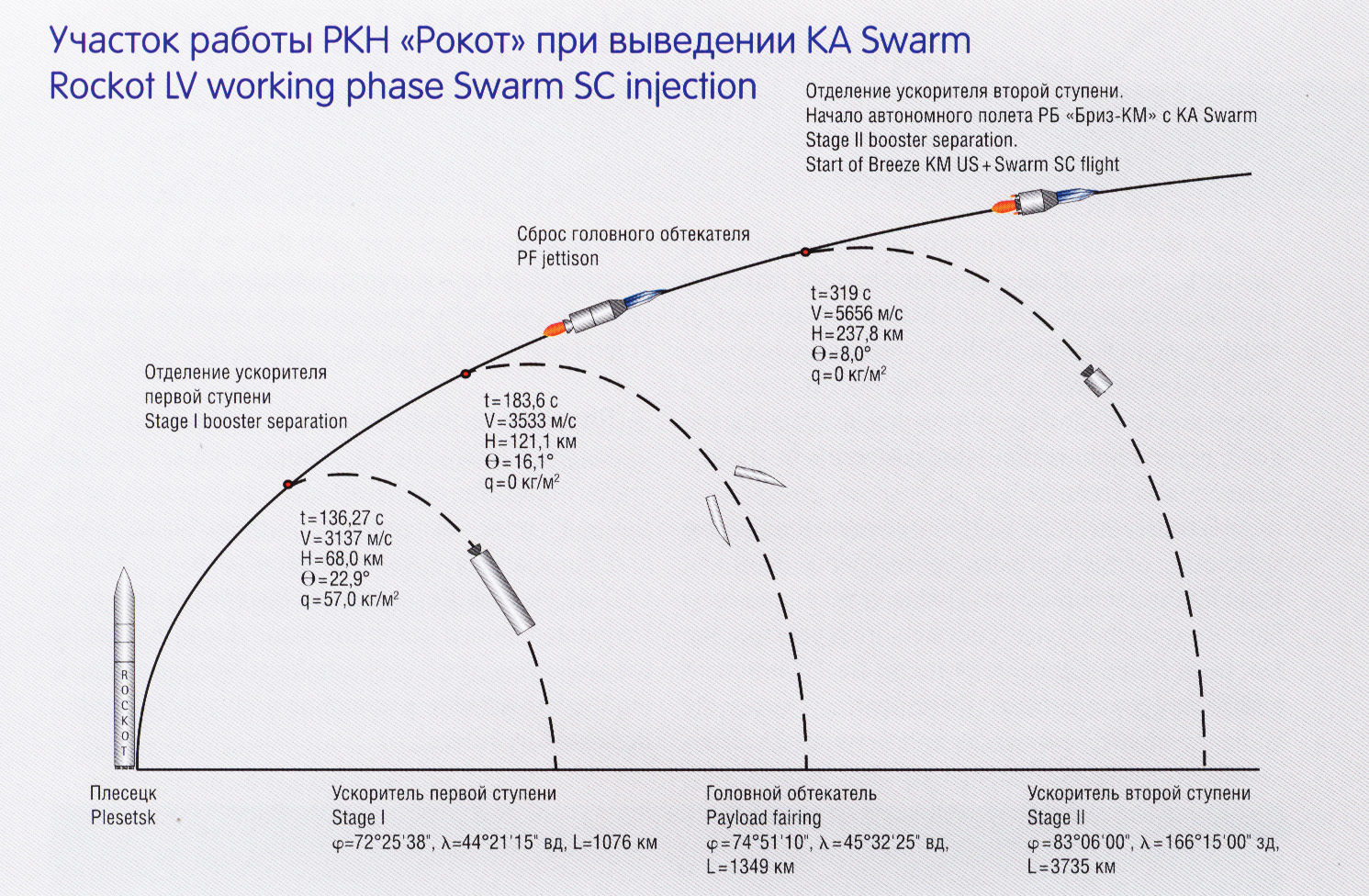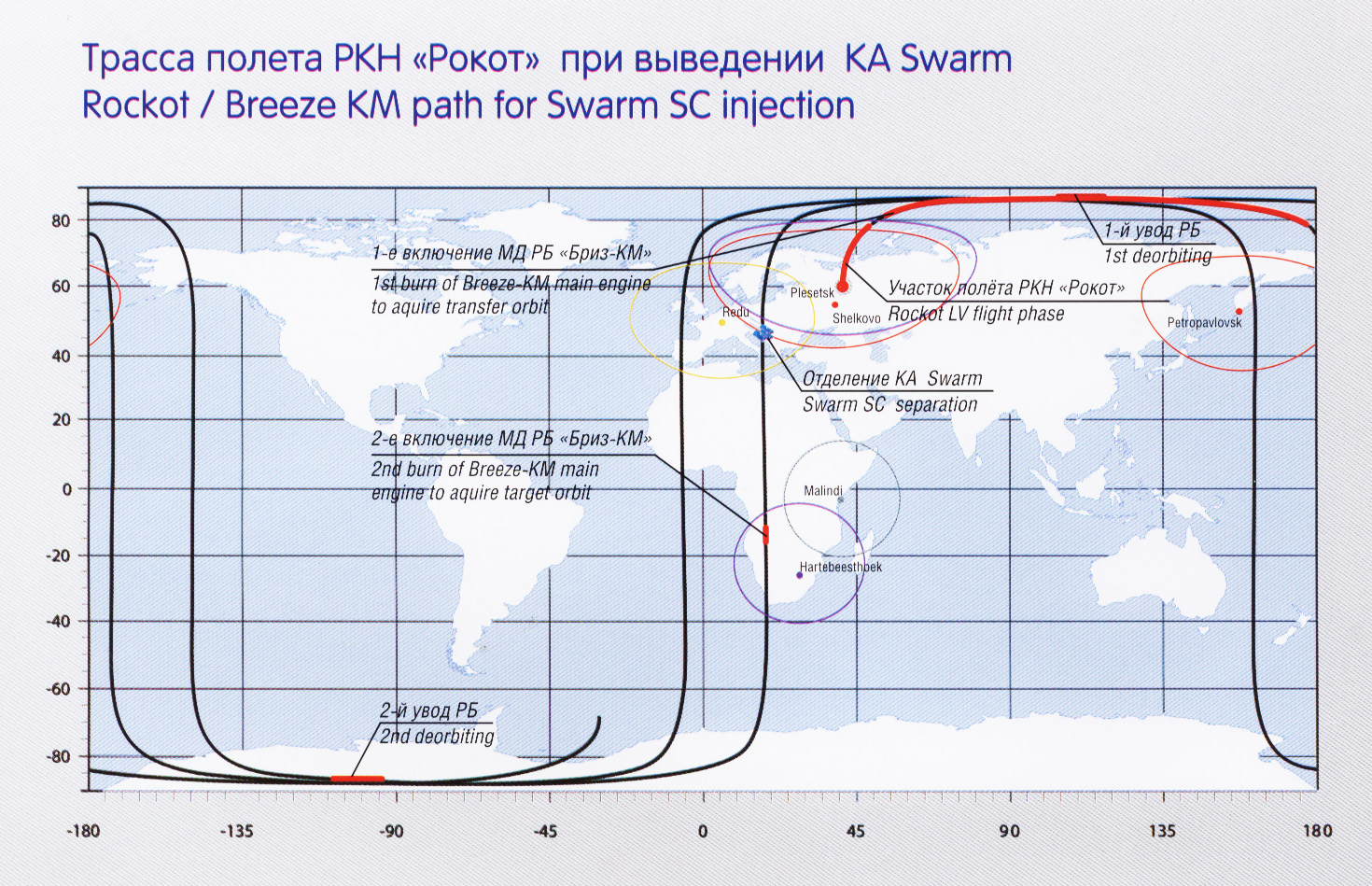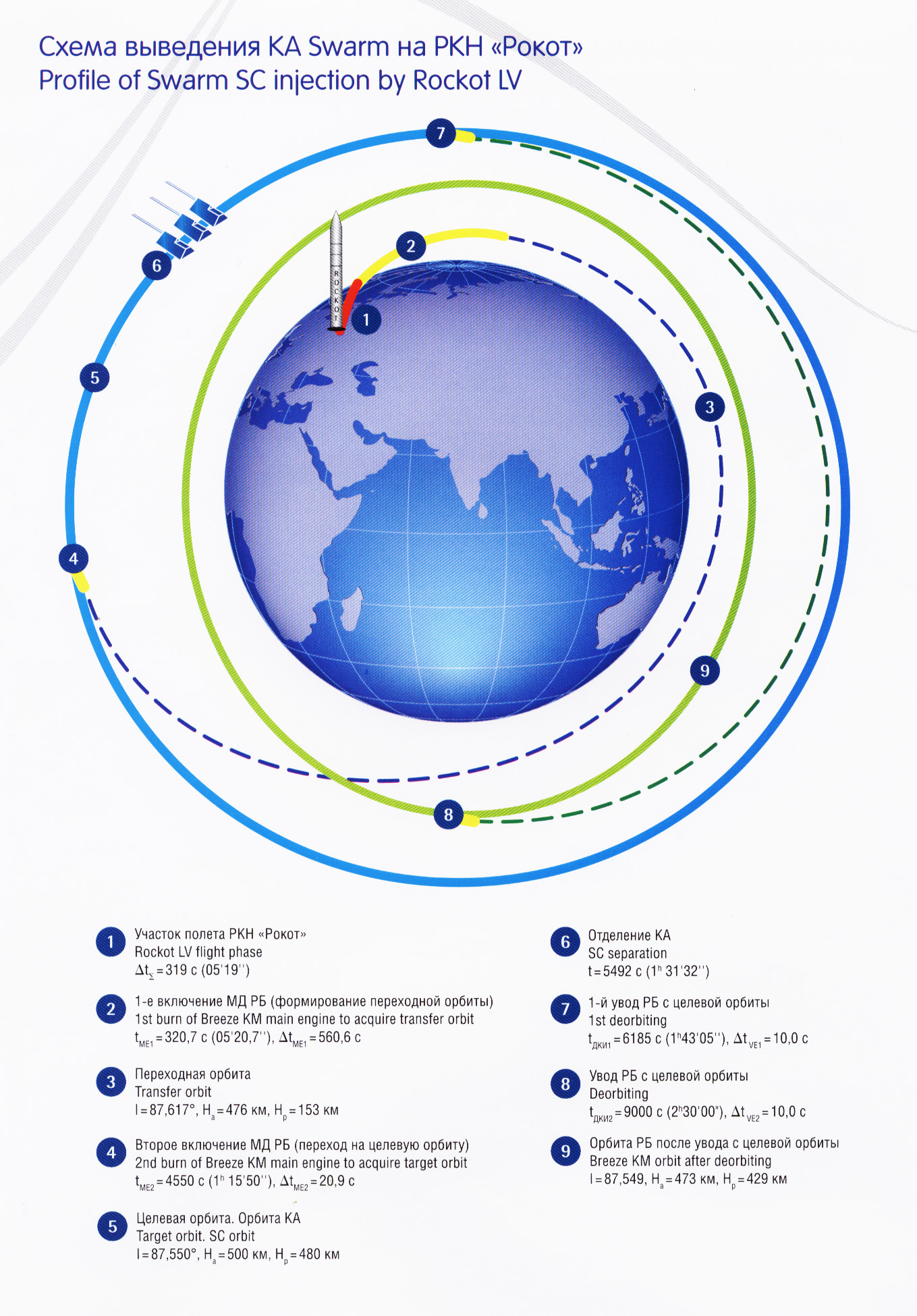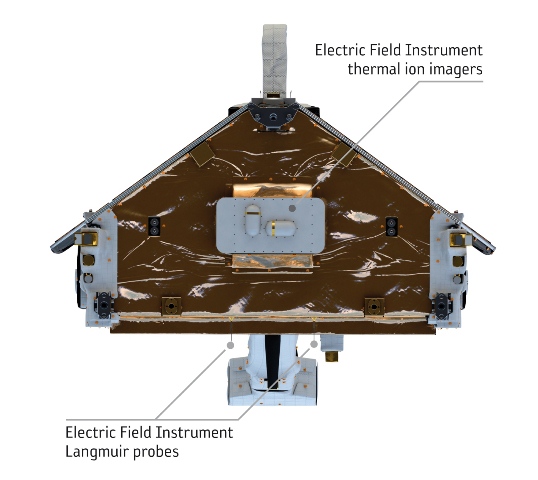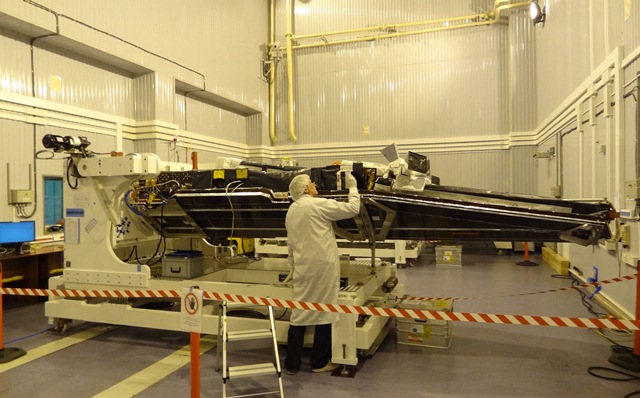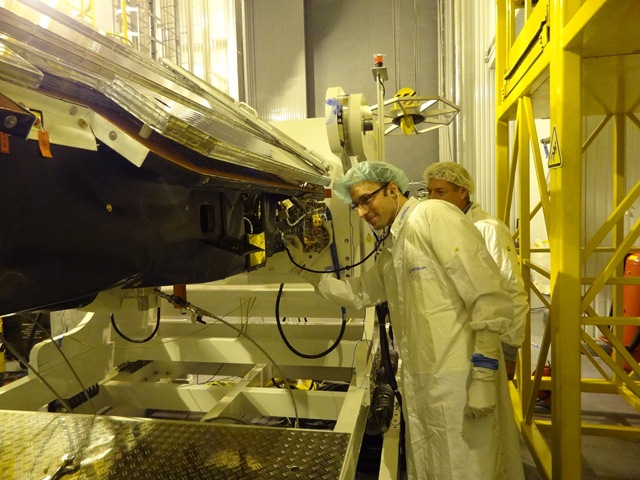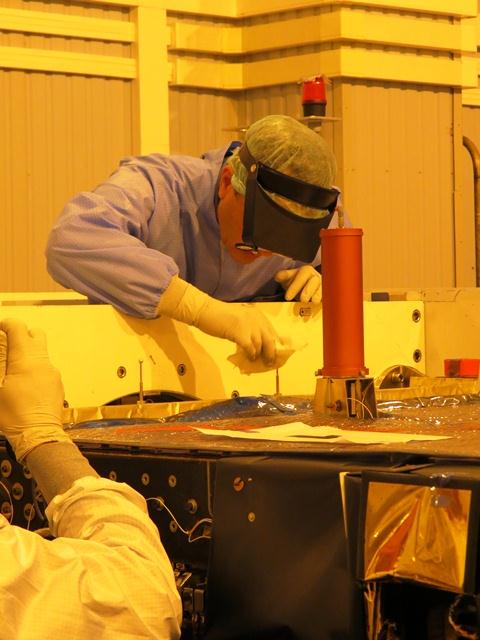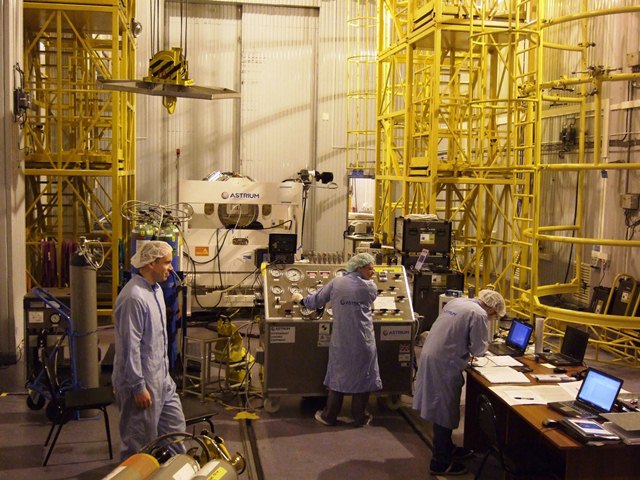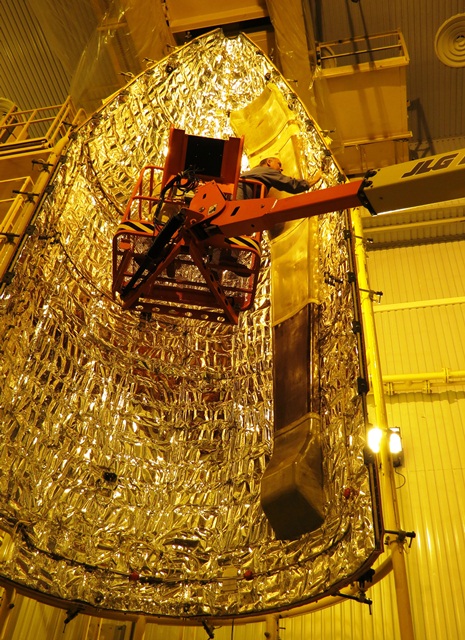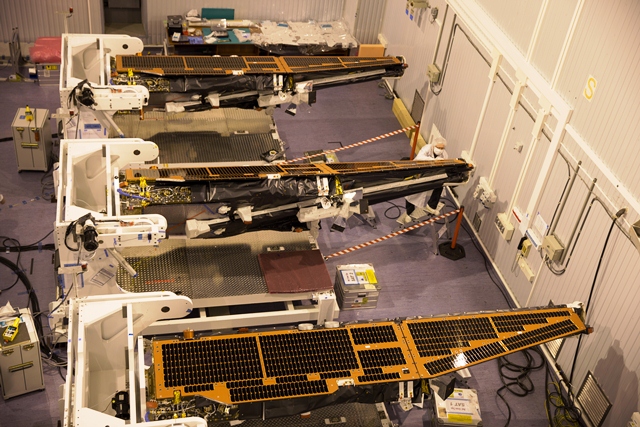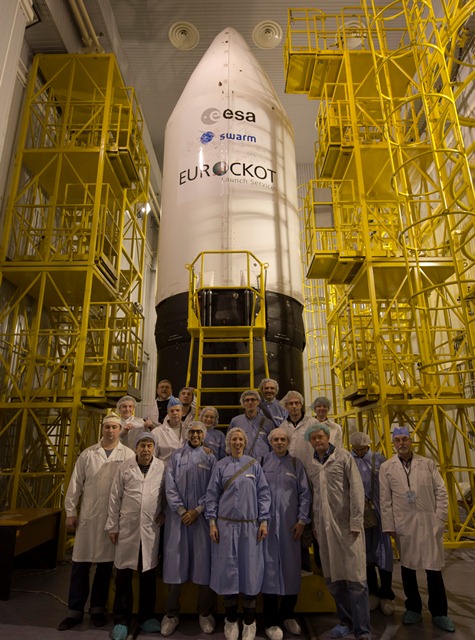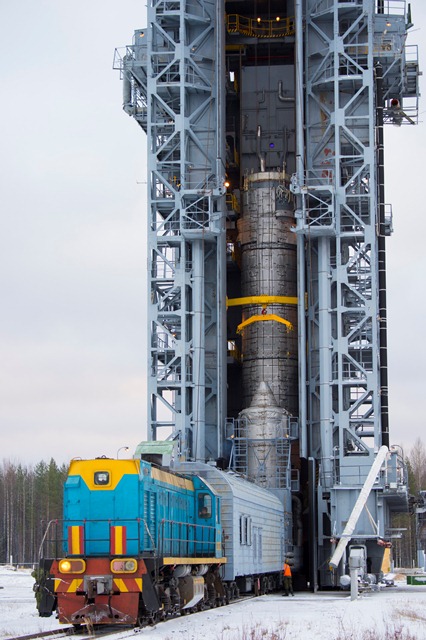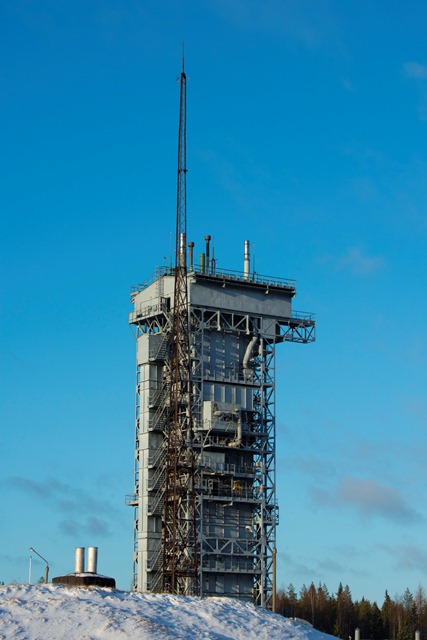The Earth's magnetic field. One of the most bizarre and poorly understood internal processes of our planet. It fluctuates to the extent that the north and south magnetic poles move in random directions at speeds noticeable in just a few years time (and in fact the polarity can flip over in just a few hundred thousand years time!). It points to the inner structure of the molten core of the Earth and how it flows on the mantle and the outside of the core. And it creates the magnetosphere that shields us from solar storms.
ESA's newest "Earth Explorer" class mission, Swarm, will utilize 3 identical spacecrafts carrying state-of-the-art magnetometers and acceleration/electric field sensors flying in slightly different polar orbits to map out the 3-dimensions magnetic field variations in the highest precision ever. Using the data from the magnetic field, magnetosphere and electric conductivity maps produced of the Earth's crust, mantle and atmosphere, new insights can be obtained of the weakening trend of the magnetic field, the South Atlantic Anomaly, the flow of the outer core, the tectonic history of major crust plates (through the "magnetic memory" layers formed during polarity reversals), electric conductivity of the mantle, ionosphere variations and magnetic storms.
The 3 spacecrafts will be deployed into space tomorrow at 12:02 UTC from Russia's Plesetsk Cosmodrome on Khrunichev's

shifty

Rokot/Briz-KM rocket.
Launch vehicle:
Rokot (meaning Rumble)
Manufacturer:
Khrunichev State Research And Production Space Centre
The Rockot lightweight launch vehicle designed subject to Governmental Decree 925-r consists of three stages. The first two stages are essentially the booster stack of the RS 18 (or, equivalently, SS 19
Stiletto) strategic missile and the Breeze KM is employed as the third stage. A payload fairing has been designed for this launcher to accommodate one or more spacecraft in addition to Breeze KM.
Rockot has a good performance largely due two the Breeze KM upper stage having broad capabilities as far as injection of spacecraft into orbits with different altitudes and/or inclinations is concerned. The Breeze KM equipment can control the spacecraft attitude to a high precision and supply spacecraft with enough power during both ascent and orbital flight lasting up to 7 hrs. A special-purpose system can separate the spacecraft and the upper stage with the minimum possible disturbances.
Rockot Performance
Items|Specs
LV configuration|Three stages Stages 1 & 2: based on SS 19 (RS 18) ICBM booosters Stage 3: Breeze KM upper stage
Lift-off mass (kg)|107,500
Payload parking orbit mass (kg) ( H circ = 200 km , i = 63 ° )|1950 (Breeze KM) 2300 (Breeze KC)
Injection error by Orbit height (%)|+ 1 to 2
Injection error by Inclination (%)|+ 0.03 to 0.05
Payload Fairing diameter/length (m)|2.5 x 2.62 / 6.74
Starting date of flight tests|May 2000 (3 successful missions of close prototypes performed in 1990-1994)
Types/quantities/thrust values (sea level/vacuum) of engines
Descriptions|Values
- Stage 1|15D95 liquid engines/3 ea. + 15D96 /1 ea. / (180,000 kgf / 212,700 kgf)
- Stage 2|15D113 liquid engine /1 ea./ (- / 23,980 kgf) (main) 15D114 liquid engine/(- /1580 kgf) (steering)
- Stage 3|S5.98 liquid engine /1 ea./(-/2000 kgf) (main) 11D458 liquid engines /4 ea./ 40 kgf (vernier) 17D58E liquid engines /12 ea. /1.3 kgf (attitude control and stabilization)
The vehicle's reliability statistics according to
http://www.spacelaunchreport.com/log2013.html:
Code:
================================================================
Vehicle Successes/Tries Realzd Pred Consc. Last Dates
Rate Rate* Succes Fail
================================================================
Rokot/Briz/K(M) 17 19 .89 .86 3 02/01/11 1994-
Mission Profile and Timeline
# of event|Event|Rel Time|UTC time
1|Contact Lift-off|0:00:00.0|12:02:29
2|1st stage booster sep|0:02:16.27|12:04:45.27
3|Fairing sep|0:03:03.6|12:05:32.6
4|2nd stage booster sep|0:05:19|12:07:48
5|Breeze-KM ME 1st start|0:05:20.7|12:07:49.7
6|Breeze-KM ME 1st shutdown|0:14:41.3|12:17:10.3
7|Breeze-KM ME 2nd start|1:15:50|13:18:19
8|Breeze-KM ME 2nd shutdown|1:16:10.9|13:18:39.9
9|Spacecrafts separation|1:31:32|13:34:01
10|Breeze-KM ME disposal burns 1st start|1:43:05|13:45:34
11|Breeze-KM ME disposal burns 1st shutdown|1:43:15|13:45:44
12|Breeze-KM ME disposal burns 2nd start|2:30:00|14:32:29
13|Breeze-KM ME disposal burns 2nd shutdown|2:30:10|14:32:39
Weather forecast for Plesetsk, Russia on November 22, 2013 (4 pm)
Overcast with snow and a chance of rain, then a chance of snow and rain showers in the afternoon. Fog early. High of 2C with a windchill as low as -5C. Winds from the South at 10 to 15 km/h. Chance of snow 80% with accumulations up to 3 cm possible.
Time|Temps|Dew Point|Relative Humidity|Precip|Snow|Cloud cover|Pressure|Wind|Weather
4 PM|1°C|0°C|97%|30%|80%|99%|1016 hPa|13 km/h SSW|
Chance of Snow
Related Blogs / Photo Reports
Watching the launch live
Spacecraft details, launch campaign photos and mission introduction videos coming soon.... :tiphat:





